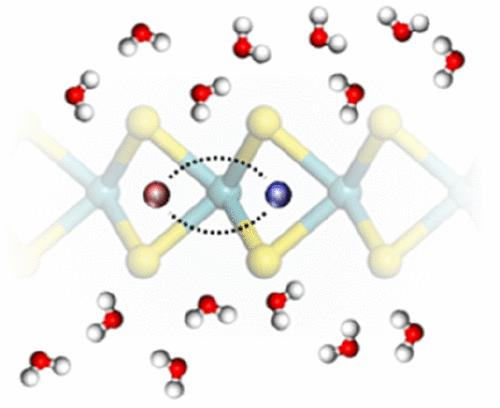当前位置:
X-MOL 学术
›
J. Phys. Chem. Lett.
›
论文详情
Our official English website, www.x-mol.net, welcomes your feedback! (Note: you will need to create a separate account there.)
Elucidating Solvatochromic Shifts in Two-Dimensional Photocatalysts by Solving the Bethe–Salpeter Equation Coupled with Implicit Solvation Method
The Journal of Physical Chemistry Letters ( IF 5.7 ) Pub Date : 2024-04-19 , DOI: 10.1021/acs.jpclett.4c00752 Se-Jun Kim 1 , Sébastien Lebègue 2 , Stefan Ringe 3 , Hyungjun Kim 1
The Journal of Physical Chemistry Letters ( IF 5.7 ) Pub Date : 2024-04-19 , DOI: 10.1021/acs.jpclett.4c00752 Se-Jun Kim 1 , Sébastien Lebègue 2 , Stefan Ringe 3 , Hyungjun Kim 1
Affiliation

|
Many studies have focused on tailoring the photophysical properties of two-dimensional (2D) materials for photocatalytic (PC) or photoelectrochemical (PEC) applications. To understand the optical properties of 2D materials in solution, we established a computational method that combined the Bethe–Salpeter equation (BSE) calculations with our GW-GPE method, allowing for GW/BSE-level calculations with implicit solvation described using the generalized Poisson equation (GPE). We applied this method to MoS2, phosphorene (PP), and g-C3N4 and found that when the solvent dielectric increased, it reduced the exciton binding energy and quasiparticle bandgap, resulting in almost no solvatochromic shift in the excitonic peaks of MoS2 and PP, which is consistent with previous experiments. However, our calculations predicted that the solvent dielectric had a significant impact on the excitonic properties of g-C3N4, exhibiting a large solvatochromic shift. We expect that our GW/BSE-GPE method will offer insights into the design of 2D materials for PC and PEC applications.
中文翻译:

通过求解 Bethe-Salpeter 方程并结合隐式溶剂化方法阐明二维光催化剂中的溶剂变色位移
许多研究都集中在为光催化(PC)或光电化学(PEC)应用定制二维(2D)材料的光物理性质。为了了解溶液中二维材料的光学性质,我们建立了一种计算方法,将 Bethe-Salpeter 方程 (BSE) 计算与我们的 GW-GPE 方法相结合,允许使用广义泊松描述的隐式溶剂化进行 GW/BSE 级计算方程(GPE)。我们将该方法应用于MoS 2、磷烯(PP)和g -C 3 N 4,发现当溶剂介电常数增加时,激子结合能和准粒子带隙降低,导致激子峰几乎没有溶剂化显色位移。 MoS 2和PP,这与之前的实验一致。然而,我们的计算预测溶剂电介质对g -C 3 N 4的激子性质有显着影响,表现出较大的溶剂化变色位移。我们期望我们的 GW/BSE-GPE 方法将为 PC 和 PEC 应用的 2D 材料设计提供见解。
更新日期:2024-04-19
中文翻译:

通过求解 Bethe-Salpeter 方程并结合隐式溶剂化方法阐明二维光催化剂中的溶剂变色位移
许多研究都集中在为光催化(PC)或光电化学(PEC)应用定制二维(2D)材料的光物理性质。为了了解溶液中二维材料的光学性质,我们建立了一种计算方法,将 Bethe-Salpeter 方程 (BSE) 计算与我们的 GW-GPE 方法相结合,允许使用广义泊松描述的隐式溶剂化进行 GW/BSE 级计算方程(GPE)。我们将该方法应用于MoS 2、磷烯(PP)和g -C 3 N 4,发现当溶剂介电常数增加时,激子结合能和准粒子带隙降低,导致激子峰几乎没有溶剂化显色位移。 MoS 2和PP,这与之前的实验一致。然而,我们的计算预测溶剂电介质对g -C 3 N 4的激子性质有显着影响,表现出较大的溶剂化变色位移。我们期望我们的 GW/BSE-GPE 方法将为 PC 和 PEC 应用的 2D 材料设计提供见解。



























 京公网安备 11010802027423号
京公网安备 11010802027423号